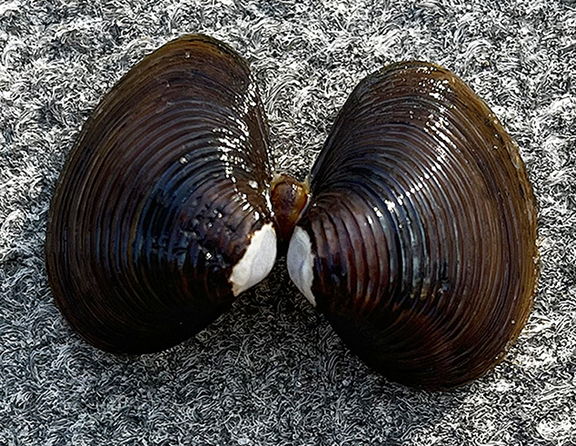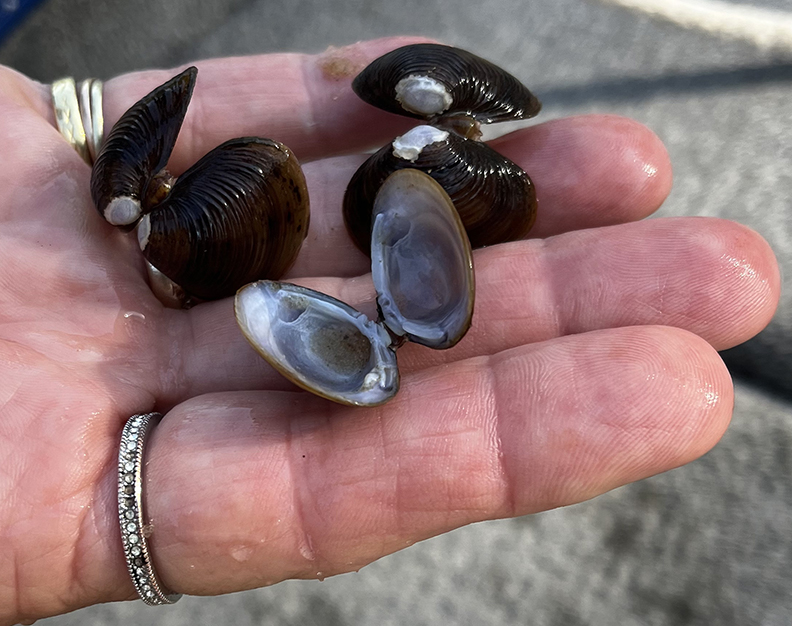This summer has been hot, and the river has been low for several weeks. Fishing has been good, however one invasive clam that exists on the Choctawhatchee River has not been doing so well. Hundreds, if not thousands of dead Asian Clams (Corbicula fluminea) have been spotted floating en mass and washed up on the banks of the lower River. Local river residents Nancy Ackerman and Lori Ceier spotted the dead clams during the week of Aug. 13, 2023.
Walton Outdoors reached out to expert Susan R. Geda, Malacologist and Project Leader, of the Freshwater Invertebrate Conservation Group, Florida Fish and Wildlife Conservation Commission to help explain the phenomena.

Here is what Susan shared:
The clams you observed are Corbicula fluminea or the Asian Clam. This is an invasive species that was introduced to the United States in 1938, and was first observed in Florida in 1960. Unfortunately, this species is now ubiquitous throughout southeastern rivers, lakes, and streams.
The traits that make Asian Clams good invaders to naïve ecosystems also make populations vulnerable to mass mortality events like the one you observed last week. Invasive species tend to have relatively short life spans, reproduce quickly, and in high numbers, which also equates to having poor competitive ability and a low tolerance for environmental stressors (i.e., invasive species typically follow a boom-bust model with exponential increases in numbers followed by large die off events).
While I cannot be absolutely certain of the cause of the mortality event on the lower Choctawhatchee River, it was most likely a result of extreme high summer temperatures combined with the effects of (slight) drought leading to low water levels. When the temperature increases in freshwater, the dissolved oxygen concentrations are significantly decreased. Additionally, water level fluctuations can impact the availability of food resources and decrease the population’s capacity to deal with stressful events, such as a heatwave.
There are 25 species of native mussels in the Choctawhatchee basin, five of which are federally listed as threatened or endangered. Thankfully, Corbicula fluminea is more vulnerable to environmental fluctuations than native species which have evolved within that ecosystem, and are better adapted to normal levels of variation in environmental parameters. The danger that events like this do pose to native populations comes from the large amount of nutrients that are released from the decaying tissues of the Asian clams. This can lead to spikes in ammonia, nitrogen, phosphorus and other nutrients that are potentially toxic to native unionid mussels.
For more information contact
Susan R. Geda, Project Leader,
Freshwater Invertebrate Conservation Group
Florida Fish and Wildlife Conservation Commission
Garcon Point Aquatic Research Center
Office: (850) 564-2438
Learn more about freshwater mussels and clams here: FWC Freshwater Mussel Brochure
Read a scientific paper on Mass Mortality Events of Invasive Freshwater Bivalves: Current Understanding and Potential Directions for Future Research here: bivalvemortality

